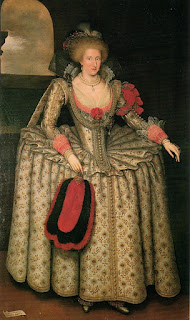Charles II was King of England, Scotland and Ireland. He was King of Scotland from 1649 until his deposition in 1651, and King of England, Scotland and Ireland from the 1660 Restoration of the monarchy until his death. (Wikipedia)
BORN 1630 St.James's Palace, London
DIED 1685 Palace of Whitehall, London
SPOUSE Catherine of Braganza
SUCCESSOR James II of England
CHILDREN James Scott, 1st Duke of Monmouth (+ more)
SIBLINGS James II of England and Henrietta of England (+ more).
If you could choose --- which Era in Time would you live in ? History shows how mankind has progressed down the ages to our very day today. Which is your favourite Time in History ?
Sunday 29 September 2019
Sunday 22 September 2019
CHARLES I
Charles I was the monarch over the three Kingdoms of England, Scotland and Ireland from 27th March 1625 until his execution in 1649. (Wikipedia)
BORN 1600 Palace Buildings Dunfermline
DIED 1649 Palace of Whitehall London
Height 1.63m
SPOUSE Henrietta Maria of France
CHILDREN Charles II of England, James II of England (+more)
PARENTS James VI and I, Anne of Denmark.
BORN 1600 Palace Buildings Dunfermline
DIED 1649 Palace of Whitehall London
Height 1.63m
SPOUSE Henrietta Maria of France
CHILDREN Charles II of England, James II of England (+more)
PARENTS James VI and I, Anne of Denmark.
Sunday 15 September 2019
JAMES VI AND I
James VI and I was King of Scotland as James VI from 24th July 1567 and King of England and Ireland as James I from the union of the Scottish and English Crowns on 24th March 1603 until his death in 1625. (Wikipedia)
BORN 1566 Edinburgh Castle
DIED 1625 Theobalds Estate, Goff's Oak
SPOUSE Anne of Denmark
CHILDREN Charles I of England (+more)
PARENTS Mary, Queen of Scots, Henry Stuart, Lord Darnely
ANNE OF DENMARK
JAMES VI AND I AND ANNE OF DENMARK
BORN 1566 Edinburgh Castle
DIED 1625 Theobalds Estate, Goff's Oak
SPOUSE Anne of Denmark
CHILDREN Charles I of England (+more)
PARENTS Mary, Queen of Scots, Henry Stuart, Lord Darnely
ANNE OF DENMARK
JAMES VI AND I AND ANNE OF DENMARK
Sunday 8 September 2019
THE STUARTS
THE HOUSE OF THE STUART MONARCHS
JAMES VI AND I
1603 - 1625
CHARLES 1
1625 - 1649
CHARLES II
1649/1660 - 1685
JAMES VII AND II
1685 - 1688
MARY II
1689 - 1694
ANNE
1702 - 1714
JAMES VI AND I
1603 - 1625
CHARLES 1
1625 - 1649
CHARLES II
1649/1660 - 1685
JAMES VII AND II
1685 - 1688
MARY II
1689 - 1694
ANNE
1702 - 1714
EDWARDIAN LIFE : THE SUFFRAGETTES
In 1905, life for women would have been very different when compared with today. Although there had been many changes over the preceding 50 years, women were still seen as very different to men under both the eyes of society and the Law. Women were educated differently, they had fewer rights both in and out of marriage, and they weren't able to vote in national elections.
Much of this stemmed from the view that marriage, rather than a career, was a woman's "natural destiny", and that if a woman did not marry, her life was in some way a failure. In fact, until the 1960's, the standard experience in life for almost every woman in Britain would be to get married. In 1901, 85% of women over 45 were either married or widowed.
There had been women's movements for years which had campaigned for suffrage (the right to vote), but in 1903, Emmeline Pankhurst set up the Women's Social and Political Union (WSPU) --- and this was to be a very different organization from those that went before.
Rather than campaign by polite political pressure --- heckling in meetings and refusing to pay fines --- the WSPU's motto was "Deeds Not Words."
The Union's members --- or suffragettes" --- lived up to their motto. These women threw eggs, they chained themselves to railings, scattered marbles under police horses' hooves, and some even went on hunger strike. Famously, suffragette Emily Davison, ran out in front of the King's horse during the Derby in June 1913 and was killed while campaigning for the suffragette cause.
It was not until after World War One that their campaigning had results. In the Representation of the People Act in 1918, all women over 30 were given the right to vote alongside adult males.
(Info from The Manor House)
Much of this stemmed from the view that marriage, rather than a career, was a woman's "natural destiny", and that if a woman did not marry, her life was in some way a failure. In fact, until the 1960's, the standard experience in life for almost every woman in Britain would be to get married. In 1901, 85% of women over 45 were either married or widowed.
There had been women's movements for years which had campaigned for suffrage (the right to vote), but in 1903, Emmeline Pankhurst set up the Women's Social and Political Union (WSPU) --- and this was to be a very different organization from those that went before.
Rather than campaign by polite political pressure --- heckling in meetings and refusing to pay fines --- the WSPU's motto was "Deeds Not Words."
The Union's members --- or suffragettes" --- lived up to their motto. These women threw eggs, they chained themselves to railings, scattered marbles under police horses' hooves, and some even went on hunger strike. Famously, suffragette Emily Davison, ran out in front of the King's horse during the Derby in June 1913 and was killed while campaigning for the suffragette cause.
It was not until after World War One that their campaigning had results. In the Representation of the People Act in 1918, all women over 30 were given the right to vote alongside adult males.
(Info from The Manor House)
Subscribe to:
Posts (Atom)
























